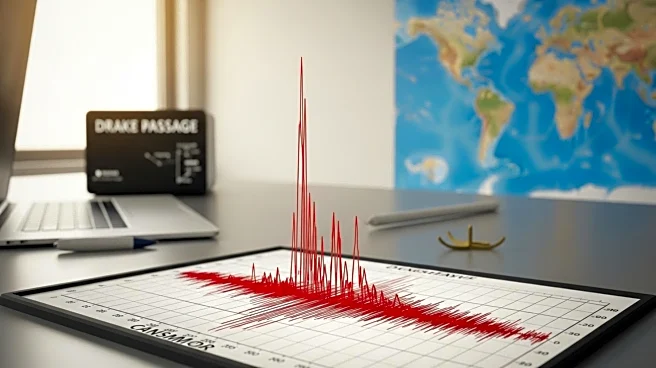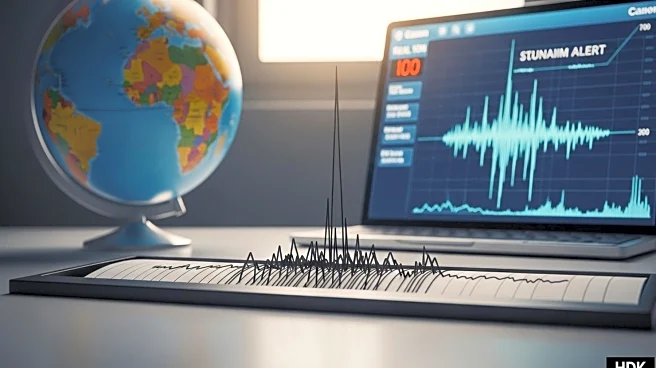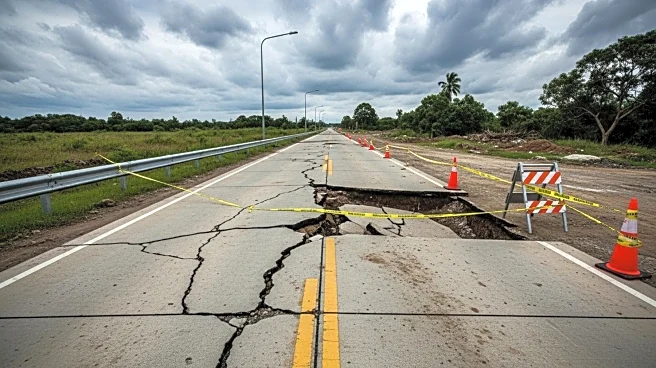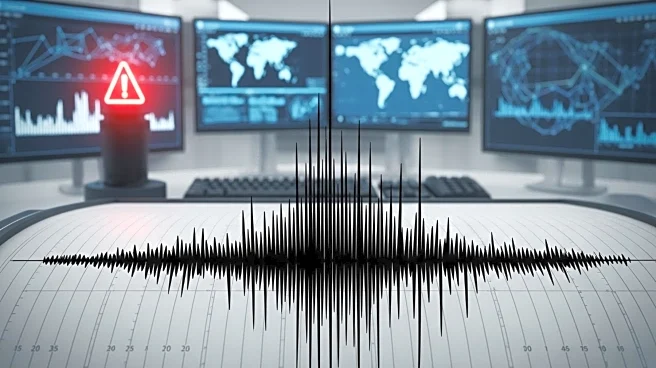What's Happening?
A massive 7.8 magnitude earthquake struck the Drake Passage, located between South America and Antarctica. The U.S. Geological Survey reported the quake's epicenter in the remote waters, with no confirmed damage or casualties due to its isolated location. Authorities are monitoring for potential tsunamis and aftershocks. The Drake Passage is known for its treacherous sea conditions, created by the Antarctic Circumpolar Current.
Why It's Important?
The earthquake highlights the seismic activity in the Drake Passage, a region critical for oceanographic research and climate studies. Monitoring for tsunamis is essential to ensure safety for vessels and researchers in the area. The event underscores the importance of understanding geological movements and their potential impacts on global ocean circulation. The Drake Passage's role in connecting major oceans makes it a vital area for scientific exploration and environmental monitoring.
Beyond the Headlines
The Drake Passage's seismic activity is influenced by the complex boundary between the Scotia Plate and the Antarctic Plate. While major earthquakes are rare, the region's geological movements offer insights into tectonic processes. The passage's remote location means that earthquakes rarely cause damage, but they are significant for understanding Earth's geological dynamics. The event may prompt further research into the passage's role in global ocean circulation and climate systems.












